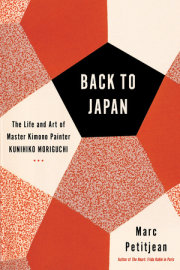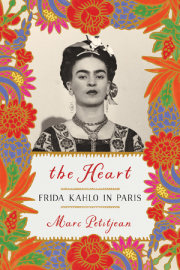A Meeting The first time I met Dr. Shuntaro Hida was in April 2005 in a Shinto cemetery, lost in the countryside some two hundred kilometers south of Tokyo. He was eighty-eight years old at the time. A very dignified figure in a suit and tie, he’d come to pay his respects to his family tomb with his wife. A letter that I’d sent him a few months earlier had been enough to persuade him to contribute to the film project
Atomic Wounds, which I wanted to make about the battles he’d fought. This survivor of the Hiroshima bomb, who’d been a few kilometers from the impact site at the time of the explosion, was one of the first doctors to record the sheer horror of the devastation. He was among the pioneers to suffer and catalog the appalling effects of radiation, which—in the absence of any rational explanation—was called the “Atomic Plague.” Thereafter, he spent his life treating victims of radiation; he struck me as the embodiment of an indisputable hero, someone who’d seen pure evil and stood up to it for long enough to remember what it looked like and to describe it.
I hoped that meeting him would give me access to a spiritual dimension that I felt must go hand in hand with the wisdom and humanity of such a man. But now that I was with him in that intimate moment when he was praying by his ancestors’ vault, I felt out of place. He himself seemed amazed that I’d turned up in this far-flung spot with an interpreter and a camera. Even so, he came over to us with a slight smile, and said, “Rumor had it that the city of Hiroshima was completely destroyed and there were no survivors. My father went there four or five days after to find out what had happened to me, but he had no idea where I might be. He left thinking I was dead and arranged a funeral here in this village. There was no body. Imagine his emotion when I came home.”
These few words about death, disappearance, and separation paradoxically established a close and lasting tie between us. A trip to Hiroshima together, several days spent in the hospital near Tokyo where he worked, and hours of interviews at his home over the next few years allowed us to build a respectful relationship. The day before I traveled home from that first visit, he concluded our interviews by saying “Because of nuclear technology, the era that lies ahead will be far more frightening and harder to live through, but I will keep fighting.” I wasn’t sure what he was envisioning, but given his experience I put my faith in this prophetic pronouncement by featuring it at the end of
Blessures atomique, which I completed in 2006. In other words, five years before Fukushima.
On March 12, 2011, following a magnitude 9.1 earthquake and a tsunami that had devastated the northeast of Japan the day before, reactor number 1 at the Fukushima nuclear plant blew up, followed two days later by reactor number 3. This plunged Japan and the rest of the world into a state of high anxiety: Fukushima was now out of control.
At the time of the explosion at the nuclear power plant, I was with friends in Kyoto, and we immediately called Dr. Hida. He wasn’t surprised by the incident, merely disgusted by human stupidity, which he thought had instigated the catastrophe in a tragic, stuttering repetition of history. “You’ll see,” he said, “it’ll be the same as Hiroshima and Chernobyl, we’ll never know the true extent of the damage.”
I had come to view the Japanese as a conscientious people with a strong sense of duty, and therefore naively hoped the authorities would implement effective measures to protect and help the victims. But this didn’t really happen: many people were left to cope on their own and were unable to deal with the medical, economic, and human repercussions of the disaster. Following numerous demonstrations that rallied as many as sixty thousand people in Tokyo (unprecedented events in Japan, which doesn’t have the same tradition as many Western countries for public expressions of opinion), the government did commit to assessing the safety of the country’s fifty-four other reactors. This drew attention to the fact that some were in a state of disrepair and were in locations with a high risk of seismic activity. The state had initially stopped all reactors, but then started some up again, despite opposition from the public: the government was determined to relaunch the nuclear network.
Immediately after the disaster, civil society mobilized its response, and mothers in the Fukushima region openly expressed their fears and anger. Survivors of the Hiroshima and Nagasaki bombs, known as
hibakusha, were valued for their firsthand experience, and were equipped to listen to these new victims, to understand them and to help them. Which is why Dr. Hida, then aged ninety-four, was in great demand to advise victims of contamination, give talks, explain the risks to the media, and secure scientific data from the authorities. I was glad to see that his reputation crossed frontiers: in January 2012, the Paris-based
Courrier international newspaper published a three-page article about him. With a view to continuing the work I’d started in 2005, I visited him in Tokyo, hoping that his experience of Hiroshima might help us understand how the Fukushima accident was really being handled. I kept thinking about what he’d said to me on the phone a year earlier: “You’ll see, it’ll be the same as Hiroshima and Chernobyl...”
Copyright © 2025 by Other Press. All rights reserved. No part of this excerpt may be reproduced or reprinted without permission in writing from the publisher.










